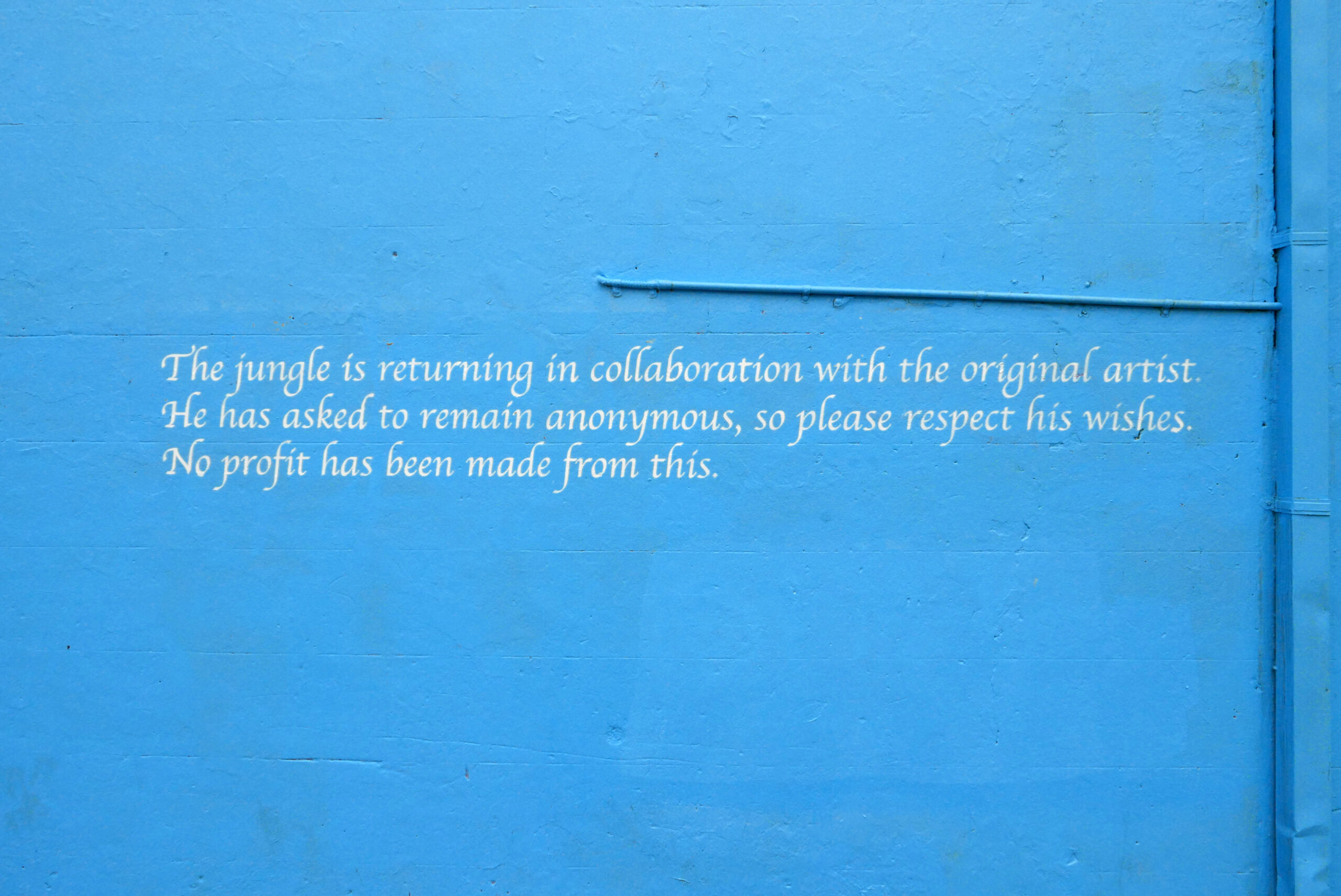
Art not ads

BY JESSICA DE VERA
A prominent mural in the inner west was painted over with a movie advertisement and the Inner West Council are likely to come to a decision on regulatory action sometime this week.
The community of Newtown displayed their outrage on multiple platforms when they noticed the iconic “It’s like a jungle sometimes” mural was replaced with a promotion for the Mother! film.
Jenny Leong, Greens MP for Newtown, said, “What’s happened here is we’ve seen an incredible community response to stand up against what is an attempt to commercialise our public space.”
The wall, situated on the corner of Bailey Street and Enmore Road, is privately owned and it’s unclear at this stage as to how the advertising agency, Apparition Media, were able to replace the mural without permission.
Elliott Routledge, Australian street artist, said, “I was frustrated and angry to hear the Newtown Mural was painted over by Apparition Media.”
“I was told by the owner of Apparition Media that they had gained permission to paint an ad over this wall, as a one-time only thing. That was not the case and they created an agreement with the owner to turn this public mural wall into a rotating billboard. This seems to be happening more and more these days, and companies like this need to be called out by councils,” he said.
There is a process that exists for third parties like companies and organisations who’d like to create or paint a mural on public spaces but sometimes, this isn’t always adhered to.
A spokesperson from the Council said, “Generally the installation of Advertising Signage in a Heritage Conservation Zone requires the lodgement and determination of a Development Application.”
Routledge said the process for them can be quite difficult. “Sometimes a DA [Development Application] is necessary but not so much anymore in some council areas. The difficult situation we, as artists, now face is that these companies have big budgets and lots of money to pay the owners. We do not. Money always wins,” he said.
The Council’s investigation into the matter has spanned over a week now and they are “empowered under the Environmental Planning and Assessment Act 1979 to take regulatory action (e.g. fines) against persons responsible for undertaking work without development consent,” a spokesperson said.
But what’s clear from this incident is that many of our diverse areas that are hubs for creativity are threatened by the commercialisation of public and free spaces.
“This is a relatively new situation that’s happening everywhere, not just in our city. It definitely seems to be increasing,” said Routledge.
There have been debates and hesitance around whether increased regulations are required over the governance of public spaces in the realm of street art.
Ms. Leong said, “We don’t necessarily want to see increased regulations and fines on people being able to express themselves creatively in our city. But we do need to make sure that those creative spaces and those public spaces aren’t used commercially just for profit or as free billboards for certain companies. We are seeing increased presence of paid-for advertising and promotional material throughout our inner city.”
From a street artists’ perspective, Routledge said, “I hope the council now regulates advertising that’s painted as murals. At the moment, it’s a loophole these companies have found to get the ads shown in even more spots. Our cities are already filled with enough advertising. Do we really need more?”
A spokesperson from the Council said, “It is not uncommon for persons or companies to go ahead and undertake unauthorised development. When Council is made aware of unlawful development, an investigation is initiated and appropriate regulatory action can be taken.”
Scott Marsh, Sydney street artist, said, “The issue is Apparition Media are circumventing artists and taking public art space. They approach property owners and pay them to paint ads over the existing murals on their walls. They need to go find their own walls and own space to create their advertisements.”
Ms. Leong said, “It’s important for us to recognise that you don’t have, and you shouldn’t have to be part of an endorsed council program or company to be able to engage in the amazing street art that has occurred around our community.”
“The Inner West Council have a good tradition of working with street artists and owners of buildings that have walls to do that,” she said.
This relationship between Council, street artists and community members is facilitated through programs like Perfect Match.
“In a perfect world, advertisements would be limited. Count how many adds you see on your commute to work – it will be hundreds. They are plastered on everything. I’d rather see public art instead,” said Marsh.
With the decision from the Council pending, community members and street artists alike are hoping for a just resolution that will send a clear message that they were not happy to see the loss of an important mural.
“The community is savvy. They understand the difference between an incredible piece of street art and a piece of advertising that a sneaky PR company is attempting to get away with without having to pay for it,” Ms. Leong said.
Currently, Apparition Media has publicly reported that they are working with the original artist, Colin Bebe, and Lifeline, on a new design for the mural on the corner of Bailey Street and Enmore Road.









